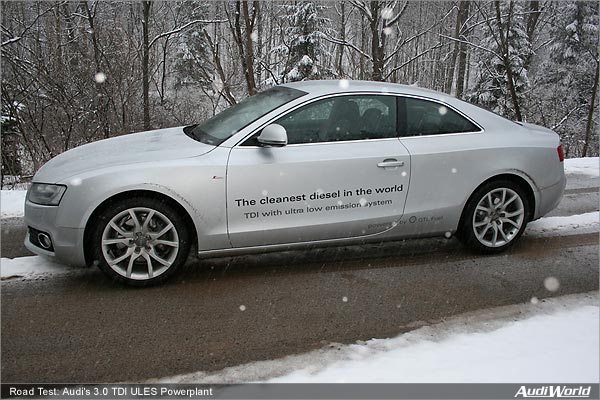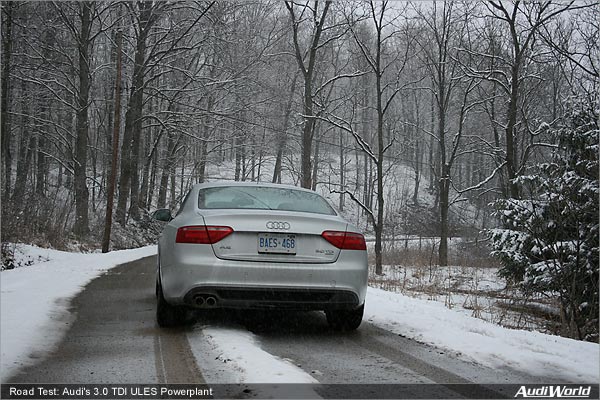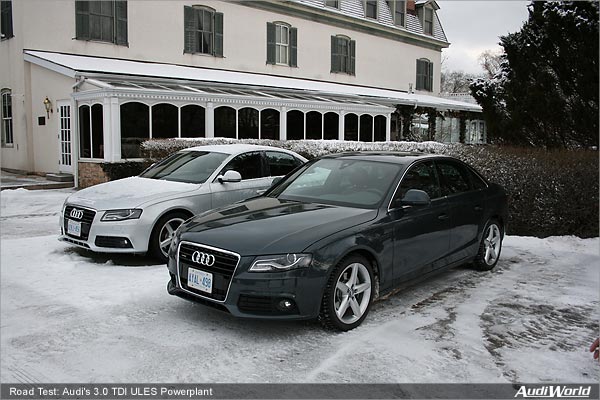Road Test: Audi’s 3.0 TDI ULES Powerplant

Initial Driving Impressions
Having not driven a TDI in a long time, I was initially expecting significant differences in how the A5 would drive. I remember the TDI fondly, but as still distinctly diesel.
Our journey started on the highway out of the city. The engine didn’t seem all that remarkable initially. That was until I realized that in itself was remarkable. The engine was quiet. It sounded like Audi’s gasoline engines, albeit with a slightly lower pitch thanks to the TDI’s 4600 RPM redline.
The power was spectacular, thanks to the mounds of torque the 3.0 TDI provides. Passing on the highway was trivial with no noticable turbo lag. However, we did notice some turbo lag from a dead stop but only when a bit heavy with the foot. Our casual driving around town felt very smooth.
While we didn’t get a chance to do formal 0-60 runs, the car felt a bit quicker than even the S5. Indeed, the TDI 3.0-liter has 406 pound-feet of torque, versus the 325 pound-feet of torque in the S5.
50 State Legal
The 3.0 TDI ULES is the world’s cleanest diesel engine. Not only that, it is legal in all 50 states, including California, Massachusetts, Maine, New York and Vermont which have had the strictest emissions requirements.
Audi managed this feat thanks to a combination of new technologies. A new common rail system with piezo injectors was developed. With piezo injectors, the number of injection processes per cycle can be varied and optimized. This reduces emissions and ensures a smoother combustion process, which also helps the engine run quieter.
AdBlue
The most significant improvement was the reduction in nitrous oxide emissions. AdBlue, a 32.5 percent urea liquid solution, is sprayed into the DeNox catalytic convertor. Together with the hot exhaust gas, the solution breaks down into ammonia, which the nitrous oxide in the exhaust then splits into nitrogen and hydrogen. The system reduces nitrous oxide emissions by up to 90 percent.
The AdBlue container is filled via the fuel tank flap, just like the fuel tank. The extremely efficient use of the AdBlue solution allows one fill to last between service appointments. Audi will fill up the AdBlue tank at each service appointment, without requiring you to worry about it.
Conclusion
The extremely refined driving characteristics of the new TDI, the superb fuel mileage of diesel, and the very clean ULES technology makes the choice between gasoline and diesel down to one of price and availability.
Audi tells us that the TDI engine will arrive in more models in the future.
|



